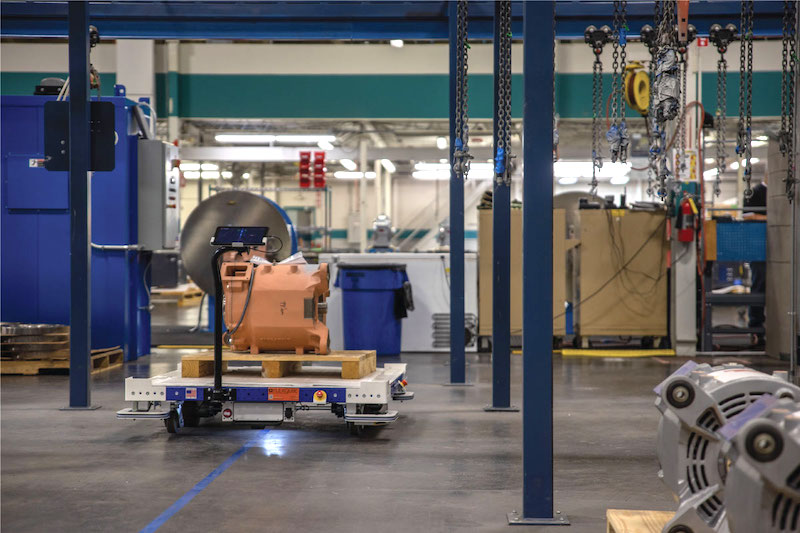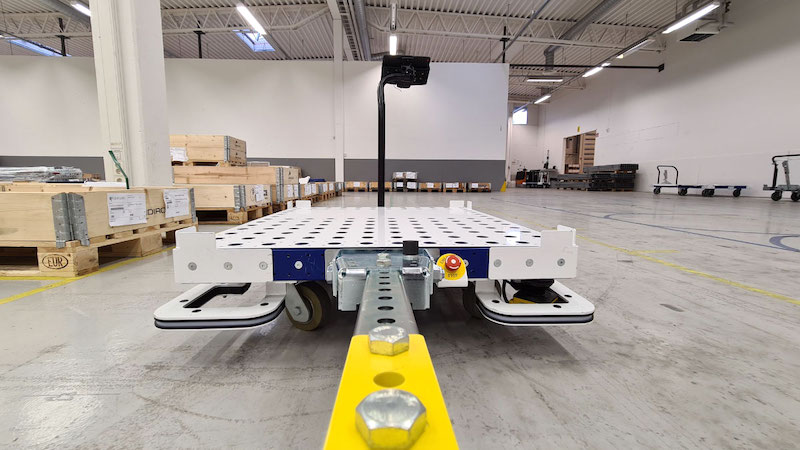
AGV vs AMR: What are the differences and which one do you need in your facility
Today’s manufacturing and logistics industry is facing significant challenges to upgrade and optimize business processes to meet the demands of a modern economy.
Advances in technology make it possible to create more efficient and productive systems through automation and digitization.
Global industrial automation is worth approximately $200 billion – and according to the latest market research study by ResearchAndMarkets.com, AGV and AMR Market is expected to reach $13.2 Billion by 2026 with a growth rate of around 35%.
That means AGVs, as well as AMRs, are going to become a new normal in day-to-day operational activities in warehouses, factories, and other facilities that could use their potential.
But, what are the differences between AGVs and AMRs, and should you use one of these solutions in your facility? This is something we are going to tackle in the article, so keep on reading.
What is an Automated Guided Vehicle (AGV)?
AGV robots are wheel-based and computer-controlled load carriers. AGVs follow marked wires or long lines on the floor of a facility without the help of a driver or onboard operator.
AGVs use a combination of sensor-based systems and software to navigate. These vehicles move around on a predictable path with controlled acceleration and deceleration.
Hence, they offer a safe way of moving loads around. Industries use AGVs in transporting materials around large industrial buildings.
There are various types of AGVs which include:
- Automated carts: This is the simplest type with minimal features and low implementation cost
- Automated forklift AGVs: Forklifts with automatic controls allowing for unmanned operations
- Unit load AGVs: These are individual vehicles used to transport loads on AGVs’ decks
- Tugged AGVs: Powered units that pull non-motorized trailers carrying loads.
What is an Autonomous Mobile Robot (AMR)?
An autonomous mobile robot is a robot that understands and moves around a facility floor without an operator.
The robot can move around with the help of computers, onboard sensors, and maps. It can understand and interpret its environment, thus offering asynchronous transportation.
AMRs offer increased flexibility by creating their routes within a facility or warehouse. They can identify obstacles and reroute when necessary without the intervention of an operator.
Thus, AMRs are best suited for dynamic environments because of their independence and flexibility.
Industries use AMRs for a variety of operations, which include:
- Transporting materials and finished goods within a warehouse or facility
- Facilitating the sorting process
- Facilitating the picking process
- Increased inventory visibility, i.e., viewing and tracking inventory in real-time
What are the differences between AGVs and AMRs?
Both AGVs and AMRs are used to automate industrial operations mostly to transport heavy materials across facilities – warehouses, distribution centers, factories, etc.
However, they are different in the following ways.

1. Navigation
AGVs are programmed to follow fixed routes. AGVs use wire, sensors, magnetic strips, or laser guidance technology for navigation.
Laser guidance technology is popular because it is easy to use and accurate. Because it uses a fixed route, an AGV will stop when it encounters obstacles.
On the other hand, AMRs use maps that the AMR software constructs onsite or pre-loaded facility drawings to navigate.
These robots can therefore learn their surroundings and choose the most effective route. AMRs can go round obstacles using intelligent navigation.
As much as this ability can be seen as an advanced option – you have to be aware of it when you are transporting materials within your facility.
For example, if you need to carry very heavy materials, the fact that an AMR can go off course without any decision from a human element can be troubling.
2. Flexibility
AGVs follow strict routes, which are integrated into the facility. An AGV will perform the same task throughout its life. Rerouting an AGV will require making changes to the facility’s floor.
AMRs are flexible and need a simple software adjustment to perform a different task. An AMR will automatically make the necessary adjustment to meet the changing production needs and environment.
As mentioned earlier, using this kind of technology may not be suitable for any kind of facility.
3. Installation and Commissioning
AGVs require complex infrastructures such as magnetic tapes and wires, which are installed into the facility. The process will therefore take time and may lead to disruption of the production process.
AMRs do not need any physical infrastructure to be set up during installation. AMRs can be deployed easily and quickly; hence don’t disrupt the production process during their installation.
4. Price
AGVs are simpler thus more affordable than AMRs. The navigation system in an AGV is less complex and does not have a lot of sensors.
AMRs use more complex and sophisticated software, which makes them more expensive. AMRs require more performance sensors and a more advanced control panel to manage all the information received from the sensors.
Choosing the best for your facility
AMRs and AGVs have different applications and are suitable for various facilities based on the facility’s needs.
AGVs are more suitable for less complex operations. If you need a robot to move materials, work-in-progress or finished goods around the facility or warehouse, then AGVs are ideal for your facility.
For example, your facility may need an AGV to transport raw materials to the production line from the warehouse. Additionally, the AGV will transport the finished goods to the warehouse for distribution.
On the other hand, AMRs are suitable for a more dynamic work environment. If your facility doesn’t have fixed routes for moving materials or needs a robot that you can use for other operations, then AMRs are ideal.
For example, you can use an AMR for transporting, loading, retrieving, and staking materials in a warehouse. Its flexibility makes it ideal for such dynamic activities.
AGVs are ideal for facilities with a greater amount of fixed operations, such as warehouses and factories. They can be programmed to follow a specific route and automatically return when they reach the end.
AMRs are suitable for facilities that have more dynamic operations, such as hospitals or airports. It is therefore essential to assess your needs, understand the technology and identify what is the best for your facility.
—
Article contributed by Luke Goodwin, content marketing manager from FlexQube.

